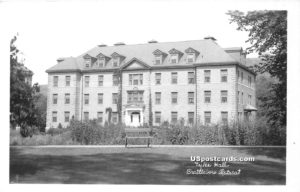
Brattleboro Retreat in Vermont, Which Opened for Occupancy in 1836
To modern sensibilities, much of what has been believed in the past about insanity sounds silly and unbelievable. Though we can often follow the logic behind even outlandish ideas, given the lack of research available at the time, the logic behind certain treatments can be a little more difficult to grasp.
In Vermont somewhere around 1800, a man named Richard Whitney became “mentally deranged” and a council of physicians tried its best to help him. They concluded that a temporary “suspension of consciousness” was just what was needed, the theory being that if the patient could be rendered unconscious in a fairly dramatic way, his mind would be diverted from unhappy associations and so remove the cause of his affliction.

As Late as the 1930s, Psychiatric Patients Were Induced Into Low Blood Sugar Comas to Rewire the Brain
The physicians first completely submerged him in water until he “became insensible” and then resuscitated him. This experimental treatment failed, but undaunted, the doctors tried again. The second effort involved opium, selected as “the proper agent for the stupefaction of the life forces.” Unfortunately, this trial killed the patient.*
Thought this extreme example is outrageous, alienists (the first mental health specialists) frequently experimented with new treatments on patients–most probably without consent or oversight. Records will never show how many died or suffered catastrophic harm from them, but researchers can rest assured that much suffering was involved.

The Utica Crib Was a Notorious Restraining Device
*Information about this case came from a work called the History of Brattleboro, published in 1806 and retold in a history of asylums in 1916..